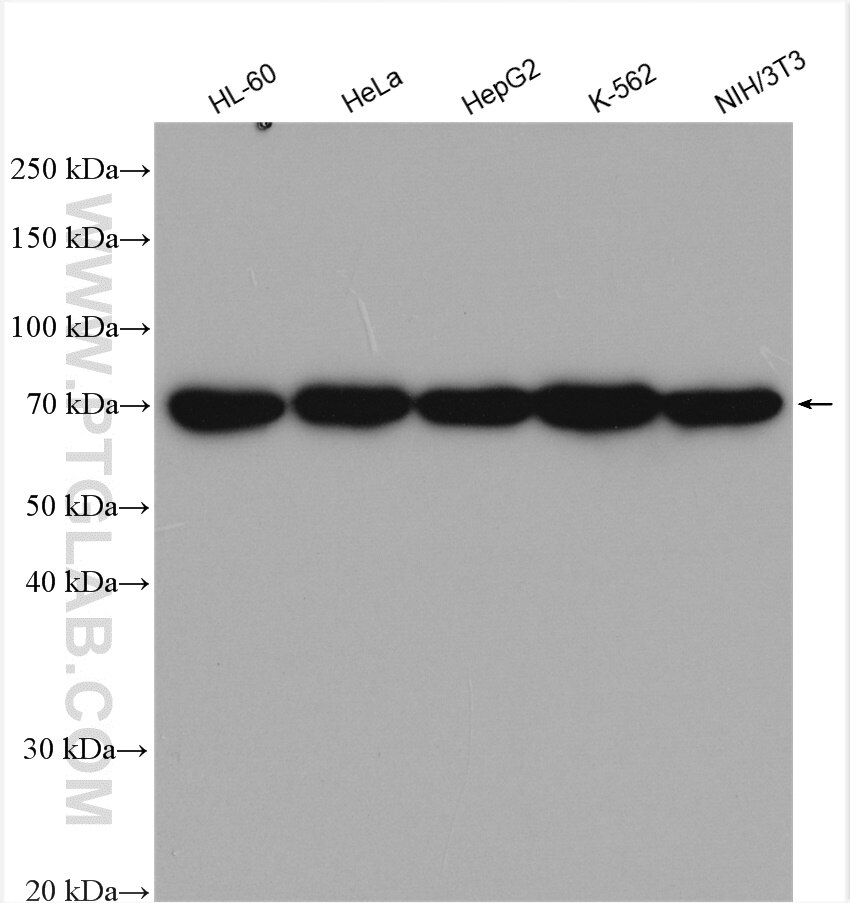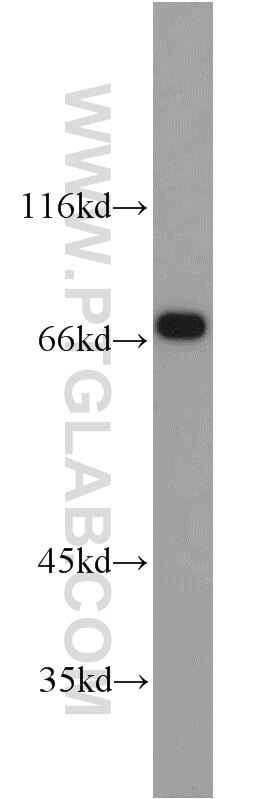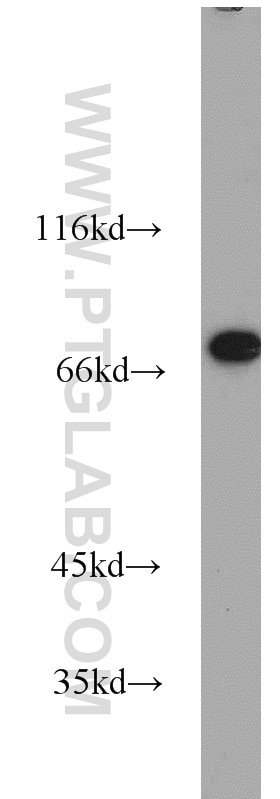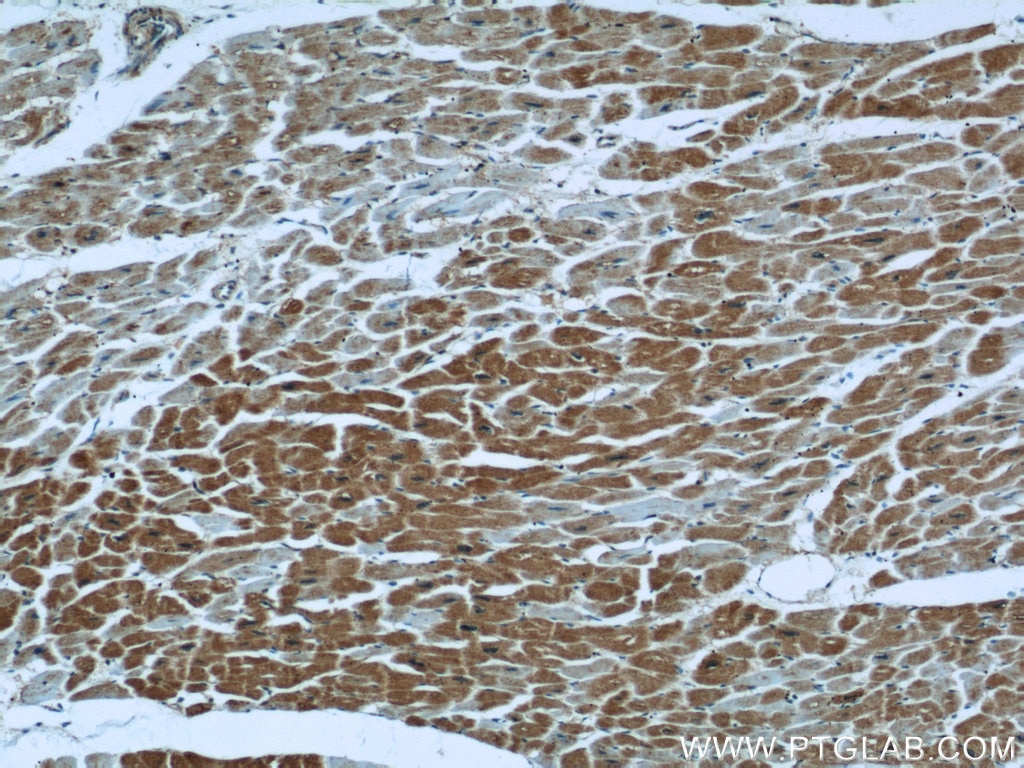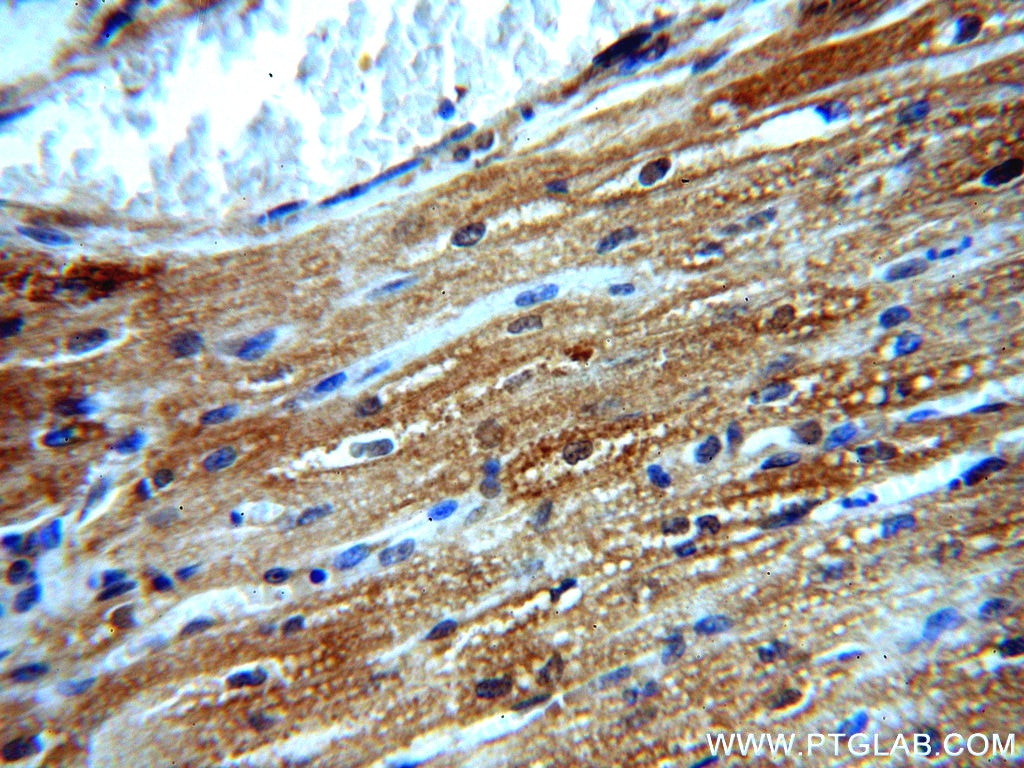Validation Data Gallery
Tested Applications
| Positive WB detected in | HL-60 cells, HeLa cells, mouse heart tissue, Raji cells, HepG2 cells, K-562 cells, NIH/3T3 cells |
| Positive IHC detected in | human heart tissue Note: suggested antigen retrieval with TE buffer pH 9.0; (*) Alternatively, antigen retrieval may be performed with citrate buffer pH 6.0 |
| Positive IF/ICC detected in | HepG2 cells |
Recommended dilution
| Application | Dilution |
|---|---|
| Western Blot (WB) | WB : 1:1000-1:6000 |
| Immunohistochemistry (IHC) | IHC : 1:20-1:200 |
| Immunofluorescence (IF)/ICC | IF/ICC : 1:200-1:800 |
| It is recommended that this reagent should be titrated in each testing system to obtain optimal results. | |
| Sample-dependent, Check data in validation data gallery. | |
Published Applications
| KD/KO | See 1 publications below |
| WB | See 10 publications below |
| IHC | See 2 publications below |
| IF | See 3 publications below |
Product Information
10325-1-AP targets TRAP1 in WB, IHC, IF/ICC, ELISA applications and shows reactivity with human, mouse, rat samples.
| Tested Reactivity | human, mouse, rat |
| Cited Reactivity | human, mouse |
| Host / Isotype | Rabbit / IgG |
| Class | Polyclonal |
| Type | Antibody |
| Immunogen | TRAP1 fusion protein Ag0400 相同性解析による交差性が予測される生物種 |
| Full Name | TNF receptor-associated protein 1 |
| Calculated molecular weight | 80 kDa |
| Observed molecular weight | 66-70 kDa, 60 kDa |
| GenBank accession number | BC000406 |
| Gene Symbol | TRAP1 |
| Gene ID (NCBI) | 10131 |
| RRID | AB_2303284 |
| Conjugate | Unconjugated |
| Form | Liquid |
| Purification Method | Antigen affinity purification |
| UNIPROT ID | Q12931 |
| Storage Buffer | PBS with 0.02% sodium azide and 50% glycerol , pH 7.3 |
| Storage Conditions | Store at -20°C. Stable for one year after shipment. Aliquoting is unnecessary for -20oC storage. |
Background Information
TNF receptor-associated protein 1 (TRAP1, synonym: HSP75) is a member of the HSP90 family of molecular chaperones, and is expressed ubiquitously and located to mitochondria. A unique LxCxE motif in HSP75, but not in other HSP90 family members, appears to be important for binding to the simian virus 40 T-antigen-binding domain of hypophosphorylated Rb. Data also suggests that suppression of the expression of TRAP1 in mitochondria plays an important role in the induction of apoptosis caused via formation of reactive oxygen species (ROS).
Protocols
| Product Specific Protocols | |
|---|---|
| WB protocol for TRAP1 antibody 10325-1-AP | Download protocol |
| IHC protocol for TRAP1 antibody 10325-1-AP | Download protocol |
| IF protocol for TRAP1 antibody 10325-1-AP | Download protocol |
| Standard Protocols | |
|---|---|
| Click here to view our Standard Protocols |
Publications
| Species | Application | Title |
|---|---|---|
J Cell Biol Parkin-independent mitophagy via Drp1-mediated outer membrane severing and inner membrane ubiquitination. | ||
Glia The LncRNA AK018453 regulates TRAP1/Smad signaling in IL-17-activated astrocytes: A potential role in EAE pathogenesis.
| ||
J Gerontol A Biol Sci Med Sci Effects of Heat Stress Treatment on Age-dependent Unfolded Protein Response in Different Types of Skeletal Muscle. | ||
Sci Rep Novel candidate factors predicting the effect of S-1 adjuvant chemotherapy of pancreatic cancer. | ||
Cell Signal Downregulated fat mass and obesity-associated protein inhibits bone resorption and osteoclastogenesis by nuclear factor-kappa B inactivation | ||
IUBMB Life Loss of high-temperature requirement protein A2 protease activity induces mitonuclear imbalance via differential regulation of mitochondrial biogenesis in sarcopenia. |

